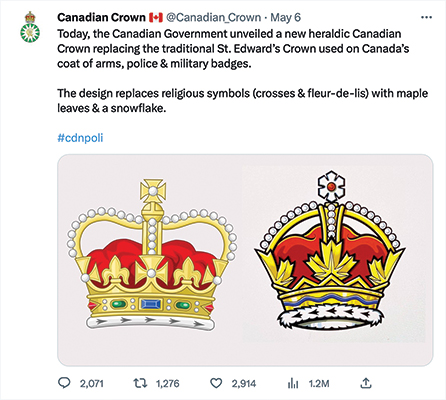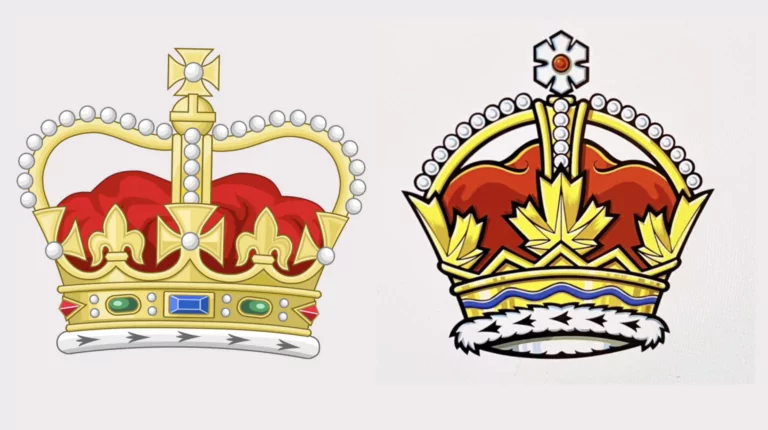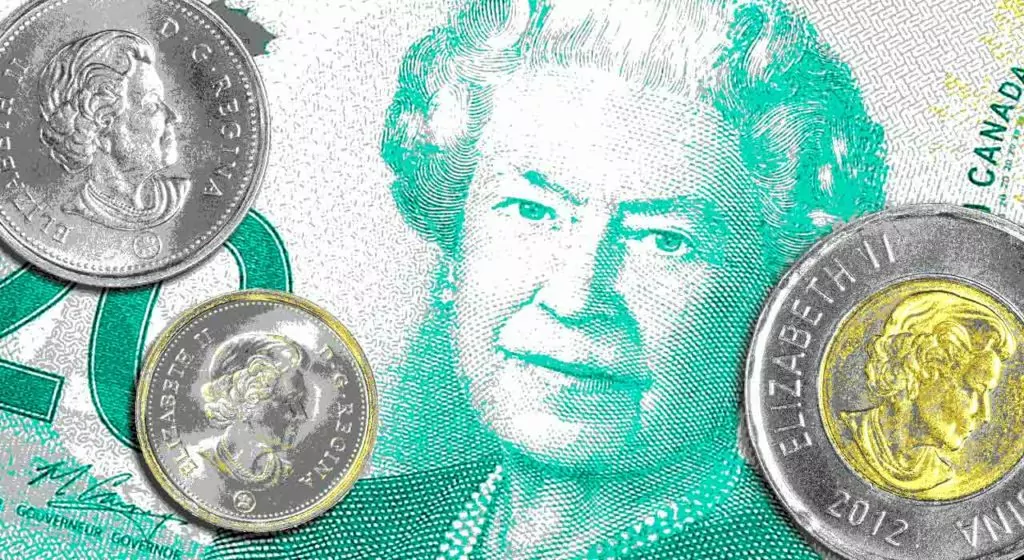The Queen on our coins testifies to Canada's Christian roots
If you look at the back of any Canadian coin you will see an image of Queen Elizabeth II. Someone might consider that to be a little bit strange. Canada has been an independent country for well over a century, so why does its money portray a British monarch?
Canada has indeed been independent for many years, but it’s important to realize that the British monarch is also simultaneously the Canadian monarch. People generally understand the monarchy in Canada to be entirely symbolic, if not anachronistic. But there is much more than symbolism involved.
A simple analysis will reveal that the Queen is, in fact, at the center of Canada’s Constitution. According to the “letter of the law,” she is very powerful. Of course, in reality, she is more of a figurehead and does not actually exercise that power. But on paper, in the actual wording of the document, she holds a lot of power – she is Canada’s Head of State, although her functions here are usually conducted by the Governor General, as her representative.
Under the section on Executive Power in The Constitution Act, 1867, the following is stated: “The Executive Government and Authority of and over Canada is hereby declared to continue and be vested in the Queen.” Not only that, but: “The Command-in-Chief of the Land and Naval Militia, and of all Naval and Military Forces, of and in Canada, is hereby declared to continue and be vested in the Queen.”
This is the current authoritative Constitution of Canada. The monarch holds the power of the executive branch of the Canadian government, and he or she is also the commander in chief of the Canadian Armed Forces. Of course, in practice the Queen doesn’t exercise these powers nowadays, but they are still firmly entrenched in the current constitution.
The Queen and Christ
From a Christian perspective, this is very significant because the Queen provides a direct institutional connection between Christianity and Canada’s political system. The connection becomes especially clear by examining the Coronation Service for the installation of Elizabeth II as Queen in 1953.
Veteran BC lawyer Humphrey Waldock summarizes important aspects of that service in his 1997 book The Blind Goddess: Law Without Christ? highlights the specifically Christian aspects of it.
Much of the service was conducted by the Archbishop of Canterbury, the highest prelate in the Church of England. In one place the Archbishop asked Elizabeth:
Will you to the utmost of your power maintain the Laws of God and the true profession of the Gospel? Will you to the utmost of your power maintain in the United Kingdom the Protestant reformed religion established by Law? Will you maintain and preserve inviolably the settlement of the Church of England and the doctrine, worship, discipline and government thereof as by Law established in England? Will you preserve under the Bishops and Clergy of England and to the Churches there committed to their charge all such rights and privileges as by Law do or shall appertain to them or any of them?
To these questions Elizabeth replied, “All this I promise to do.”
Then she laid her right hand upon the Bible and swore, “The things which I have herebefore promised I will perform and keep, so help me God.” Then she kissed the Bible, and signed the Oath, after which the Archbishop said:
To keep your Majesty ever mindful of the Law and the Gospel of God as the rule for the whole life and government of Christian Princes we present you with this book, the most valuable thing that this world affords.
Carefully note that Canada’s Head of State took an oath to maintain the Law of God to the utmost of her power. She has clearly violated this oath, as well as others, but she is still accountable to the oath. Canada’s Head of State is formally bound, by her own words, to uphold God’s Law.
Subsequently in the service, Matthew 22:15 was read, the Nicene Creed was recited, a hymn sung, and then Elizabeth was anointed by the Archbishop. As he anointed her Queen he stated:
As Solomon was anointed King by Zadok the Priest and Nathan the Prophet, so be Thou anointed, blessed and consecrated Queen over the peoples whom the Lord Thy God hath given Thee to rule and govern.
Next, the Archbishop presented the Sword of State saying,
...that she may not bear this sword in vain but may use it as the minister of God for the terror and punishment of evildoers and for the protection and encouragement of those that do well.
With this sword do justice, stop the growth of iniquity, protect the Holy Church of God, help and defend widows and orphans, restore the things that are gone to decay, maintain the things that are restored, punish and reform what is amiss and confirm what is in good order. That doing these things you may be glorious in all virtue and so faithfully serve our Lord Jesus Christ in this life that you may reign forever with him in the life which is to come.
She also received other tokens of authority including the Robe Royal, the Rod of Equity and Mercy, and a ring. The Archbishop continued,
Receive the Ring of kingly dignity, and the seal of Catholic faith: and as you are this day consecrated to be our head and prince, so may you continue steadfastly as the Defender of Christ’s religion
As Waldock points out, it is clear from the Coronation Service that Canada’s monarchy formally acknowledges that it receives its authority from God. The Queen, Waldock writes, “had utterly submitted her temporal jurisdiction for justice to the authority of Christ and the Church under oath.”
Loyal to God
In section 128 of The Constitution Act, 1867it is stipulated that every Senator, every MP and every MLA must take the Oath of Allegiance which appears in the Fifth Schedule of the Act. The Oath of Allegiance entails one to swear to “be faithful and bear true Allegiance to Her Majesty” Queen Elizabeth II.
If the Queen has sworn to uphold the Law of God, and Canada’s elected officials swear allegiance to her, it would seem, then, that those officials must uphold the same Law the Queen has sworn to uphold. This is certainly the implication that Waldock draws: “No servants of the Queen have any authority or jurisdiction to substitute their ideas of morals or religion for those she has sworn to.”
Many Canadians no longer support the Monarchy and see the Queen as a foreigner who is inconsequential to Canada. But Canada’s Constitution says otherwise, and the Monarchy provides a vital institutional link between Christianity and Canada’s government.
There are moves afoot in Britain to change the role of the monarchy and it’s likely that the explicitly Christian aspects will be lost in the future. But as things stand now, and as they have stood throughout Canada’s history to this point, our Head of State is sworn to uphold the “Protestant reformed religion.” Clearly, Canada’s Head of State is an explicitly Christian monarch.
Take a look at the back of the coins in your pocket or purse and remember the oath made by the lady whose image you see. She may be woefully deficient in keeping her oath, but it remains an acknowledgment that she, the head of the country, is accountable to our Lord.
This article was originally published in the March 2013 issue under the title "One for the Money: The Queen’s image on our coins points to the constitutional bond between Christianity and Canada’s national government." If you want to read further on this topic, Michael Wagner’s book, "Leaving God Behind" about Canada’s Christian roots can be purchased here. Also, the folks at Worldview Encounter have created a 5-minute video based on this article that you can view below, and if you like this one, be sure to check their website for more in the upcoming weeks.
How the Queen Demonstrates Canada's Christian Foundation. from Kingdom Focus on Vimeo....
 It is no surprise that Justin Trudeau has no use for these public reminders of our Sovereign Lord Jesus Christ. But in divorcing the civil government’s authority from God, where does it get its authority from? The new symbols point to nature. How do the snow, leaves, and water give any authority to our government? They are pretty to view, and useful for living, but have no transcendent authority themselves. As snowflakes melt and leaves decay, we can expect the same for any government that finds its authority in itself. It is also ironic that, in an effort to undermine Christ as king, our government has to look to Christ’s creation for new symbols.
It is no surprise that Justin Trudeau has no use for these public reminders of our Sovereign Lord Jesus Christ. But in divorcing the civil government’s authority from God, where does it get its authority from? The new symbols point to nature. How do the snow, leaves, and water give any authority to our government? They are pretty to view, and useful for living, but have no transcendent authority themselves. As snowflakes melt and leaves decay, we can expect the same for any government that finds its authority in itself. It is also ironic that, in an effort to undermine Christ as king, our government has to look to Christ’s creation for new symbols.














